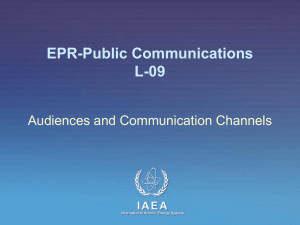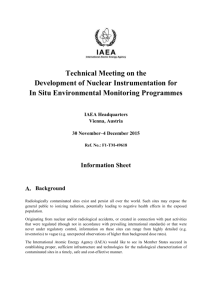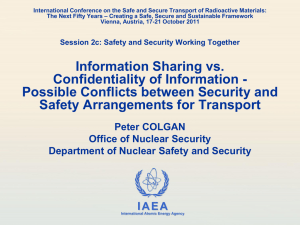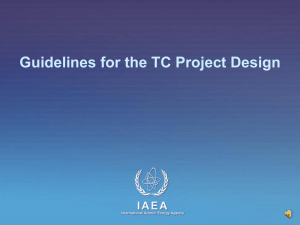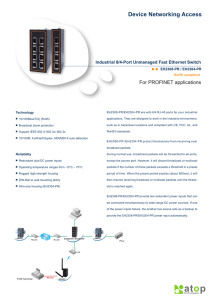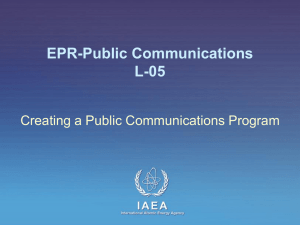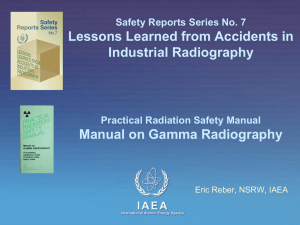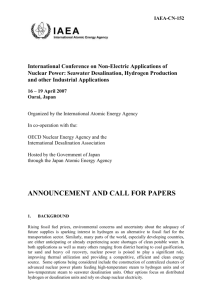Criteria for IEC Standards - IEEE-SA
advertisement
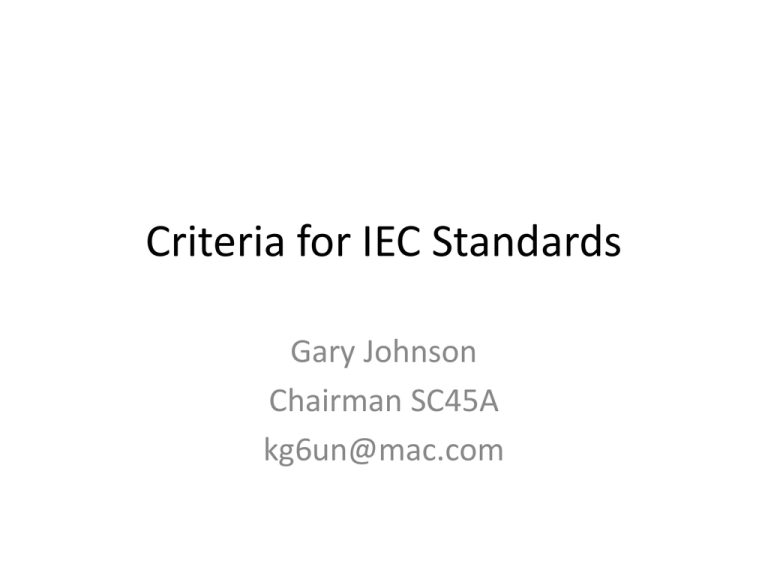
Criteria for IEC Standards Gary Johnson Chairman SC45A kg6un@mac.com IEC Standards must be useable in all SC45A Member States • • • • • • • • • • • Argentina Belgium Canada China Czech Republic Egypt Finland France Italy Japan Korea • • • • • • • • • • • Netherlands Norway Pakistan Romania Russia South Africa Spain Sweden Ukraine UK US Framework Issues Technical issues To make standards useful in all of these states standards must: • Be technically acceptable to the Member States • Be NPP technology neutral – Or explicitly restricted to specific type of plant or plants • Fit the regulatory environment of all Member States • Use normative references that are accepted by all Member States • Use terminology that has been accepted by Member States and that is consistently applied across the set of standards. IEC standards must be technically acceptable to the Member States • Technical agreement is reached through the working groups. • Technical agreement is formally endorsed by the vote of National Committees IEC standards should be plant technology neutral* • PWR – – – – – – – – – – – – – – – – Framatome PWR CPR-1000 CNP-600 EPR VVER-1000 VVER-440 Westinghouse PWR Mitsubishi PWR CNP-300 CE PWR OPR-1000 APR-1400 AP-1000 Siemens PWR KWU-PWR B&W PWR • BWR – – – – – – GE BWR Toshiba BWR Hitachi BWR ABWR Asea-Atom BWR KWU BWR • LMR – BN-600 • I&C Technology – “Analog” – Computer-Based – FPGA Based Much variation within these categories • Gas reactor – AGR • PHWR • • CANDU Siemens PHWR *or explicitly state the plant technologies to which they apply Achieving technology neutral standards • Working groups typically include members who are familiar with most of these designs • Formal review by National Committees is expected to consider how the standards apply to the designs used in their country • Scope of a standard may be limited to one or a few technologies IEC standards must fit the regulatory environment of all member states • There are many different regulatory environments, for example: – US • Specific regulations and extensive guidance – UK • General regulations and high level review guidance – France • General regulations and TSO technical review – Russia • Specific regulations but no published review guidance – Ukraine • Regulations based upon Russian model, I&C requirements based upon IAEA NS-G-1.3 We need a reference set of regulatory principles, but 1) the principles of a single Regulator won’t work and 2) it is impossible to merge the requirements of all regulators Only IAEA requirements documents been endorsed by all member states • For NPP I&C the most significant IAEA requirements are – SSR 2/1, Safety of Nuclear Power Plants: Design – NS-R-3, Safety of Nuclear Power Plants: Operation – GS-R-3, The Management System for Facilities and Operations • Management systems include the definition and implementation of quality assurance activities • NS-G-1.3 plays the role of IEEE 603 – Different scopes (important to safety vs safety) Achieving consistency between IAEA and Member State regulatory environment • Ensuring consistency with Member State practices is the job of three review groups – Nuclear Safety Standards Committee (NUSSC) • http://www-ns.iaea.org/committees/default.asp?s=5&l=37 – Committee on Safety Standards (CSS) • Same as above – IAEA Board of Governors • http://www.iaea.org/About/Policy/Board/ • WENRA Safety Reference Levels are based upon the IAEA Safety Requirements. – WENRA is cited in the European Directive on Nuclear Safety and Waste • http://eur-lex.europa.eu/LexUriServ/LexUriServ.do?uri=OJ:L:2009:172:0018:0022:EN:PDF IEC standards use normative references that are accepted by all Member States • Three sets of standard document are accepted by all member states – IEC – ISO – IAEA IEC standards use terminology that is commonly understood by all Member States • IAEA, IEC, and ISO have terminology that has been accepted by all member states – IAEA Safety Glossary • http://www-pub.iaea.org/MTCD/publications/PDF/Pub1290_web.pdf – SC45A Safety Glossary • http://std.iec.ch/terms/terms.nsf/ByTC?OpenView&Count=-1&RestrictToCategory=45A – IEC International Electrotechncal Vocabulary • http://www.electropedia.org/IEC Glossary of Terms – ISO Concept Database • http://www.iso.org/obp/ui/ Achieving a consistent use of terminology • SC45A takes the IAEA Safety Glossary as the authority for nuclear safety terms – In exceptional cases SC45A may adapt the IAEA definition, and recommend changes to IAEA • Existing definitions in the SC45A glossary are used to ensure consistency • SC45A takes the IEV and the ISO concept database as sources of terminology that are not nuclear I&C specific – Avoid new definitions where possible • Draft standards are reviewed against this policy.


